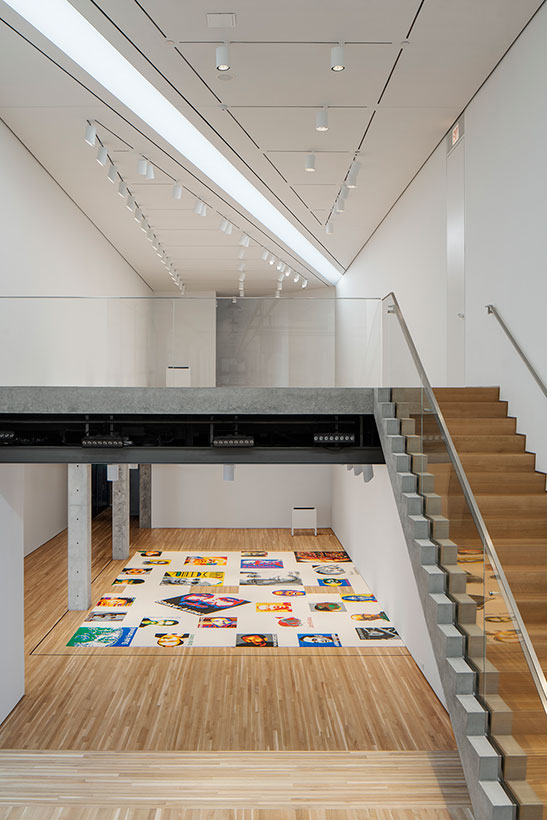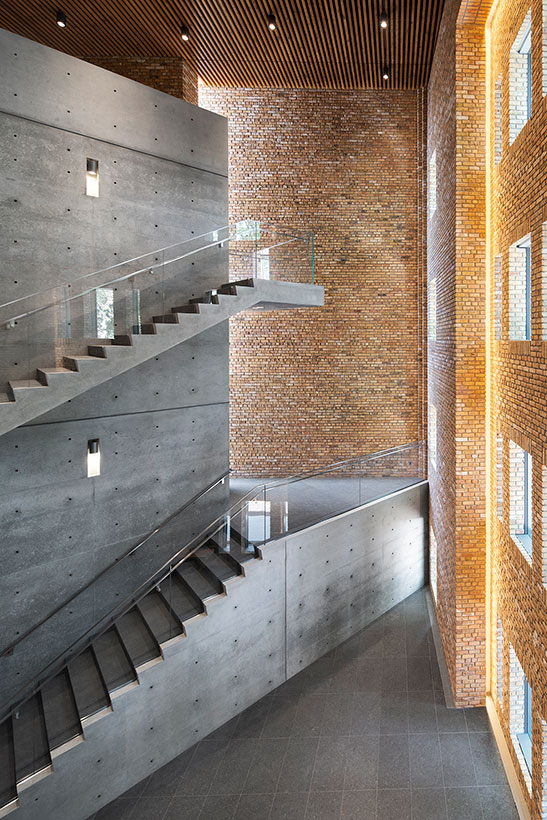Wrightwood 659 gallery covers all the options with ETC
Date Posted: 8/8/2019

Wrightwood 659 is a new art gallery in Chicago exhibiting architecture and socially engaged art. As befits a gallery focused on great architecture, Wrightwood 659 has an impressive pedigree of its own. Originally built in the 1920s, this brownstone building was completely gutted and fit out with a modern steel and concrete interior designed by world-renowned architect Tadao Ando. The design team turned to ETC to deliver a lighting control system capable of adapting to changing exhibits and integrating control protocols associated with new lighting technologies.
The design of the gallery balances wide-open spaces with intimate “coves,” for viewing smaller exhibits. The gallery owner required a significant number of control zones to accommodate a variety of uses and maximize flexibility. In addition to simple dimming, the gallery wanted to include lights with color-changing capabilities. The system was to be programmed by the curators while walking the space, changing light levels and color from a single, portable device. As the system requirements mounted, ETC and the Paradigm control system became the obvious solution.
“They needed a system that had DMX control for color-changing, but could also handle traditional two-wire, architectural dimming – and they didn’t want it to be two different systems. They wanted it really simple, even though they wanted it really complex,” laughs Lauri Tredinnick of Pivotal Lighting Design, who designed the lighting and control systems for the project. “I landed on ETC because they combine color control and DMX addressing with architectural systems so well.”
ETC’s architectural flexibility, showcased by its Paradigm control system, was crucial to the project. “With over 400 circuits of control, plus more than 75 button stations and sensors, the power of Paradigm’s processors was critical to this installation’s success,” says Chris Prezas, owner of Protolight, the project’s system integrator which provided, installed, and programmed the ETC system. “Paradigm’s capabilities allowed us to rely on it for control of the entire building, from the galleries and atrium, to the exterior lighting, elevators and loading dock,” adds Prezas. “Paradigm controls it all.”

Wrightwood 659 also received an assist from ETC’s ThruPower dimming module. ThruPower modules mean the gallery can send dimmed power to one area of track and switched/relay power to another – and change it at any time. Traditional dimming is easily supported, and so are switching capabilities for new color-changing fixtures. “ThruPower allowed us to not have to choose,” says Joel Furmanek of KSA, the Chicago-based lighting rep for the install. “They can be dimmers today, relays tomorrow. We helped future-proof ourselves.”
The future for Wrightwood 659 also means allowing curators to make lighting changes while standing in the space and seeing their changes happen in real time. “They wanted to be able to walk through the space setting the light levels for each track zone, with the additional ability to adjust the color of the architectural coves,” says Tredinnick. ETC’s Paradigm Handheld Touchscreen controller with its industry-leading customizable color interface gives them that ability. “They kept saying we have to be able to do this wirelessly. Thanks to ETC, they can.”
Unsurprisingly, the building also had to meet strict energy codes and work intuitively for guests, which meant occupancy sensor and manual control station devices – none of which could take away from the exacting design of the space. Once again, ETC’s products shone. The stylish Inspire control stations and low-profile responsive controls from ETC blended seamlessly into the space, preserving the spirit of the design. “ETC’s hardware enabled us to avoid conversations about how control would impact the architectural design – which was great,” adds Furmanek.
Wrightwood 659 has been warmly welcomed by artists and the architecture community, and continues to impress visitors daily. Part of that success is due to ETC’s control solutions. “It was a successful project because ETC could cover all the options,” Furmanek says. “The hard part was deciding which options to go with.”